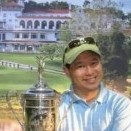-
Posts
17 -
Joined
-
Last visited
About joedeausen
- Birthday 11/21/1969
Contact Methods
-
Twitter
@joedeausen
-
Instagram
@joedeausen
Profile Information
-
Gender
Male
-
Location
Potomac, Maryland
-
Interests
Golf, P90X2, Mystery shopping, fitness, reading, travel, amusement parks
Player Profile
-
Age
50-59
-
Swing Speed
91-100 mph
-
Handicap
11
-
Frequency of Play/Practice
Multiple times per week
-
Player Type
Competitive
-
Biggest Strength
Short Game
-
Biggest Weakness
Approach
-
Fitted for Clubs
Yes
joedeausen's Achievements
-
How's this even going to work at the retail level? If I'm trying to qualify as an amateur for the US Open, I suppose I would have to comply with the "reduced distance ball" at all the qualifying events. Are retailers going to stock their shelves with the reduced distance ball? I can see this now. .... Come to the PGA Tour Store/Dicks/mom&pop to buy your "reduced distance ball"? Right, who is gonna buy it? And, the mom and pop stores aren't gonna have the shelf space for a product with a very limited customer base. As for the smaller golf ball manufacturers (i.e, Direct to Consumer), how are they gonna handle the logistics of being in the "reduced distance" golf ball market? They're gonna make a golf ball that almost no one buys. I highly doubt it. For something like this to work, the major ball manufacturers would be the only likely producers due to the limited target customer for "reduced distance" golf balls. For the Professionals, they would have to keep two stocks of golf balls: One for events using the "reduced distance" golf ball, and the other for the rest of the tournaments with the regular distance golf ball. Bifurcation is going to be a logistics nightmare for the golf ball manufacturers, golf professionals, and regular "joe" golfers wishing to qualify for the "elite golf tournaments."
-
$$ big money in golf balls. At this point, golf tours need to court/consider the industry manufacturers' concerns. Lots of people would lose jobs if 1 manufacturer wins the 1 ball contract. Players would revolt. Lots of players have spent years honing their craft their golf ball.
-
Storm319.... I did say at the beginning of the post, "I put together this commentary on bifurcation back in early 2018" Korn Ferry Tour started in 2019 https://golfweek.usatoday.com/2019/06/24/golf-korn-ferry-web-dot-com-tour/
-
I put together this commentary on bifurcation back in early 2018. Here are some considerations: Re: Comment on Bifurcation of Rules (specifically, the golf ball) As to the bifurcation of the rules of golf, many folks would agree that technology must be reined in. Most people would agree with this premise. But, the real question which needs to be addressed is, where does the professional level begin at which technology is reined in? Let's assume that the golf ball manufacturers eventually agree to make a ball that goes somewhere between 15-20% less distance than it currently does. Who would be in charge of making sure that professionals adhere to this rule? Is it the pro golfer? USGA? R&A? PGA Tour? How would testing be applied in pro golf tournaments to ensure that this is the case? Second, we address the question of what level to apply the rules of a new reduced distance golf ball. Excerpts from Wikipedia: "Golf is one of the more lucrative sports in the world for both men and women, but has a very different structure from other sports. Almost all (at least 95%) professional golfers make their primary income as club or teaching professionals rather than competition. "Touring professionals", also known as "Tournament golfers" or "Pro golfers", who make their income from prize money and endorsements are a small elite within the profession." Would a new reduced golf ball be required for the following tours? And, consider that some of these tours help golfers qualify for a PGA Tour event. Web.com Tour Challenge Tour (second tier tour to European Tour) Asian Developmental Tour Japan Challenge Tour PGA Tour of China PGA Tour of India There are also third and fourth level tours, which are independently offered and may affect qualification for the 2nd level tours, like Web.com and Challenge Tour. Will these professional events also require use of the new ball? How about the US Open? The U.S. Open is open to any professional, or to any amateur with an up-to-date men's USGA Handicap Index not exceeding 1.4. Obviously, potential participants in the US Open trying to qualify have to use the new "reduced" golf ball. Who will be in charge of ensuring that these potential qualifiers are using the correct ball? How about amateurs qualifying for PGA Tour events thru sponsor exemptions? PGA professionals for the PGA Championship? Soo, if only PGA Tour players have access to this new "reduced distance golf ball", wouldn't anyone else not using this ball have a competitive disadvantage by not having access to it? Also, if you don't have access to the ball, how can players determine its performance in the short game? Again, another competitive disadvantage if only select players have access to this ball. The Masters golf tournament would not have to abide by the reduced golf ball, if they chose not to. But, wouldn't they be asked for input into the eventual decision? Personally, I'm in agreement that the golf ball needs to have some distance roll back. If the golf ball manufacturers agree to the roll back (which is not an insignificant hurdle), bigger questions remain as to how the golf ball distance roll back would be implemented. 1. At what levels do the new ball apply? And, how far down the ladder of professional golf, does the new ball apply? 2. How would the use of the reduced ball be monitored and implemented? I understand the reluctance of the PGA Tour in making a decision to roll back the golf ball. Even if they said, yes, let's do it. How would they do it? And, who would it impact?
-
Max Homa has a point about the non-designated events: "On the topic of limited fields, Homa was particularly protective of those on the outside looking in. In restricting access to those high-money weeks to “70-to-80 players,” per Monahan’s memo, Homa argued the Tour’s intent wasn’t to keep players out, but rather to provide a lifeline to those in non-designated events. “The part that’s frustrating and maybe just simply misunderstood is that if we made these fields very large in these designated events, it would ruin non-designated events,” Homa said. “It would ruin them. No one would play in half of them because it would no longer fit your schedule.”
-
This guy does, Barry Gibbons. Lives in TX. Unofficial record of 1,235 round of golf in 2020. My hero, sort of. https://www.golfdigest.com/story/is-there-controversy-over-who-holds-world-record-most-golf-rounds-played-in-year#:~:text=I hadn't thought much,an accomplishment chronicled by Wisconsin.
-
It's not necessarily about the company that's doing the fitting. The club fitter's experience level and ability to communicate is what makes for a good fitting. Just like taking a golf lesson. The Pro giving the lesson needs to assess your skills, tools, and give you the right knowledge/information in each lesson.
-
I agree that you should get fit for clubs. To add to this discussion, when I got fit in late 2019 for my clubs at a local Club Champion, I was fit for Mizuno JPX 919 Forged Irons. My club fitter let me know that included in the cost was an annual checkup for club lofts and lie angles. That means every year, a customer can schedule a fitting checkup to get adjustments. "Depending on how often you play, iron head material — softer forged carbon steels will move more with regular use — and course conditions (firm versus soft)" https://golf.com/gear/irons/golf-club-fitter-check-loft-and-lie-angle/. This is one of the benefits not often mentioned when discussing buying off the rack vs. getting fit for clubs. Also, I don't know if all club fitters provide this service (gratis) as part of the club build cost (Club Champion). my 2 cents.
-

Which Club In Your Bag Do You Rarely Use?
joedeausen replied to KC Golf's topic in General Equipment Talk
Wow. svengineer... 73-degree feel wedge.... who makes that club? I have a 64-degree made by XE1. And, 3W is my leased used club. -
That is correct. https://www.usga.org/content/usga/home-page/articles/2022/11/key-rules-of-golf-changes-2023.html "Back-on-the-Line Relief Procedure: The back-on-the-line relief procedure, often used for penalty area and unplayable ball relief, has been simplified so that the player now drops their ball on the line, and the ball must come to rest within one club-length of where it is dropped."
-
I watched this on my DVR recording. After dropping twice, (and the ball rolling down the hill), a player gets to place the ball where the ball hits the ground. Lydia's ball would not stay in position when trying to place the ball on the ground. The player continues to place the ball with their hand on the ground till the ball stays in position. The rules official watched her place the ball multiple times. Each time the ball would not stay in position. Lydia continued the ball placement process until it finally stayed still. She was allowed to keep placing the ball, moving up the hill. I would highly suggest that all golfers know the rules regarding drops. 2023 will bring even more relief to the drop procedure with the new rule changes. Come Jan. 1, the procedure will be more forgiving. Your ball merely must come to rest within one club-length of where you drop it, even if it is one club-length closer to the hole. https://golf.com/instruction/rules/rules-golf-changes-2023-more-forgiving/
-

What do you use for impact location?
joedeausen replied to badgergolf's topic in General Equipment Talk
Let's say you don't have foot spray/powder, impact tape/stickers, or dry erase markers. You can use your own saliva or spit. To do this, spit on the clubface and smear it over the whole face so that there is a little sheen to it. You probably have about 20-30 seconds to hit the ball before the saliva dries up. The golf ball impact will leave an impression of the golf ball dimples. To do it again, spit and repeat process. Once you're done, wipe the face with a towel. Benefits: No clubface markings which foot spray/powder and dry erase markers make; and low cost Typically, I use foot spray, which is easy to clean; but use saliva when I'm out on the driving range and don't have anything else. This method works best with the driver and woods. A little more difficult to see on irons and in sunny weather conditions. -
Every person has different swing characteristics and wouldn't rely on another person's experiences to transfer to your swing. Trial and error with different shafts and clubheads is the best way to get optimal launch conditions. Good club fitters can use their knowledge and experience to find the right shafts and club heads to give you optimal driver launch conditions.
-
Clubhead speed is essentially the same between the two shafts. Launch angle is in a great range with the stiff shaft @ 12 to 13 degrees. Spin in the 2500 range, which is much better with the stiff shaft. Angle of Attack is negative, which could be improved with lessons or more forward ball position. Positive AOA with the driver generates more carry distance. Understanding where you generally hit the ball on the clubface can help with understanding your swing. Much improved numbers with the stiff shaft. If the dispersion patterns are tighter, just a little better AOA will dramatically increase distance. Nice work.



